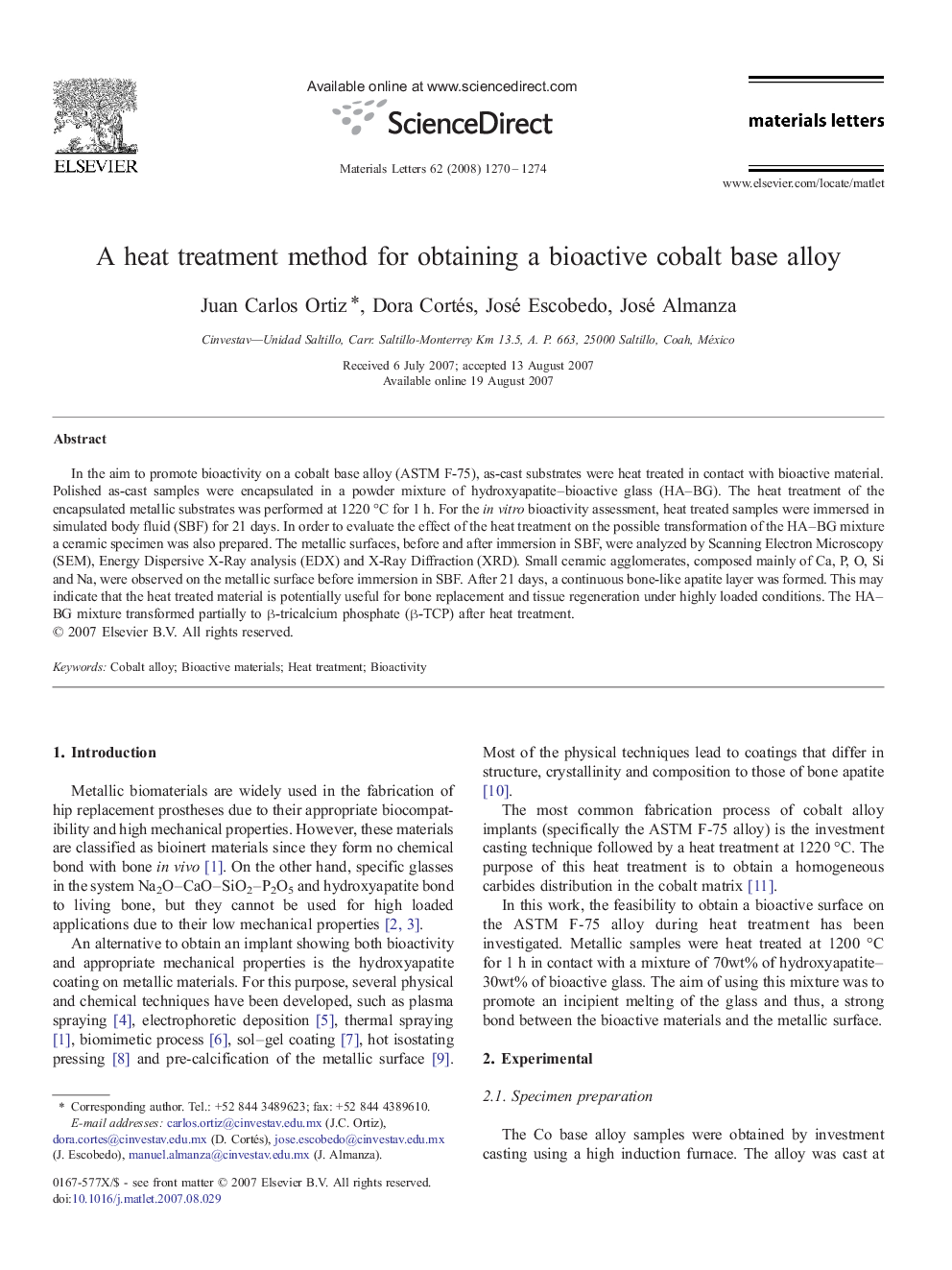| Article ID | Journal | Published Year | Pages | File Type |
|---|---|---|---|---|
| 1651619 | Materials Letters | 2008 | 5 Pages |
In the aim to promote bioactivity on a cobalt base alloy (ASTM F-75), as-cast substrates were heat treated in contact with bioactive material. Polished as-cast samples were encapsulated in a powder mixture of hydroxyapatite–bioactive glass (HA–BG). The heat treatment of the encapsulated metallic substrates was performed at 1220 °C for 1 h. For the in vitro bioactivity assessment, heat treated samples were immersed in simulated body fluid (SBF) for 21 days. In order to evaluate the effect of the heat treatment on the possible transformation of the HA–BG mixture a ceramic specimen was also prepared. The metallic surfaces, before and after immersion in SBF, were analyzed by Scanning Electron Microscopy (SEM), Energy Dispersive X-Ray analysis (EDX) and X-Ray Diffraction (XRD). Small ceramic agglomerates, composed mainly of Ca, P, O, Si and Na, were observed on the metallic surface before immersion in SBF. After 21 days, a continuous bone-like apatite layer was formed. This may indicate that the heat treated material is potentially useful for bone replacement and tissue regeneration under highly loaded conditions. The HA–BG mixture transformed partially to β-tricalcium phosphate (β-TCP) after heat treatment.
